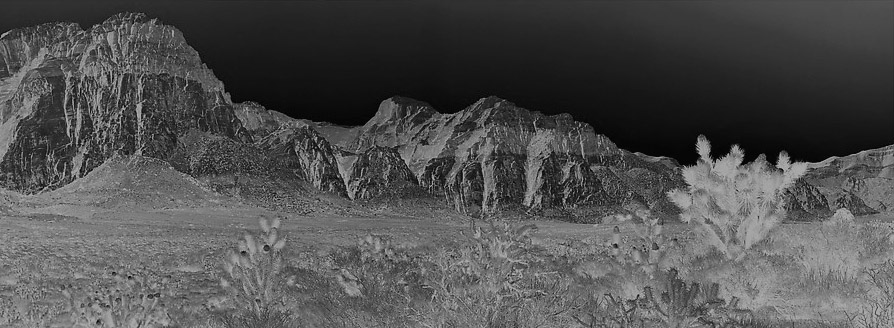
Glossary
Accuracy
Accuracy generally quantifies how close a measurement is to its real value. In the practical context of pointing an imaging system, it describes how close to the intended viewing angle the imager actually achieves.
Bit Depth
Imaging systems must digitize the analog intensity signals that are generated by each pixel. The number of discrete levels into which the signal range is divided is known as the Bit Depth.
Cooled vs. Uncooled Detectors
The choice between cooled and uncooled detectors depends on your imaging needs, distance, and environmental conditions.
Critical Dimension
The Critical Dimension refers to the smaller of the two principle dimensions (width or height) in an image.
Detection
Detection refers to the ability of an observer to recognize that something is present within the field of view, even if there is not enough detail to identify specific features of the target.
Field of View
Field of View (FoV) is the observable area you can see through an optical device. In an imaging system, FoV is a function of focal length, the size of the detector elements (called pixels), and also the number of pixels (array size).
Identification
Identification, along with Detection and Recognition, is one of three terms commonly used to describe an imaging system task. This term refers to the ability of an observer to differentiate small differences between targets of the same class.
Image Fusion
Image Fusion combines multiple images to create a single, unified image (or video stream). Often, thermal images are fused with either visible imagery or image intensified imagery to provide the best details of both in a single image.
Image Intensifier
Image Intensifiers (I2) amplify existing visual light far beyond the capabilities of the human eye.
Infrared Spectrum
The Infrared Spectrum spans a wide array of wavelengths, enabling a diverse range of applications including night vision, temperature sensing, and material composition analysis.
Infrared vs. Thermal Imagers
In the field of imaging technology, infrared and thermal are terms often used interchangeably, but they refer to different technologies with unique capabilities.
Line Replaceable Unit (LRU)
Line Replaceable Units enhance the efficiency, sustainability, and longevity of imaging systems by offering modularity, ease of maintenance, and seamless upgrades.
Long Wave Infrared (LWIR)
Operating within the 7.5µm to 14µm wavelength range, Long Wave Infrared (LWIR) captures thermal data in the non-visible infrared spectrum, providing critical insights for various industries.
Mid Wave Infrared (MWIR)
Mid Wave Infrared (MWIR) is the part of the infrared spectrum with wavelengths from about 3.0µm to 5.0µm. All thermal imagers operating in this wave band are cooled imagers.
Near Infrared (NIR)
The Near Infrared (NIR) region of the electromagnetic spectrum, spanning approximately 0.75µm to 1.5µm, offers a unique range of applications and imaging capabilities. Although NIR falls within the infrared spectrum, it is important to distinguish it from thermal imaging technology.
Night Vision
Night Vision refers to image intensified cameras, which operate in the NIR portion of the spectrum. Imagery from this spectral region is often false-colored green, as green is the area of the visible spectrum that the human eye is most sensitive to. The advantage of this type of system is that it sees visible details that may look different in the thermal imaging spectrum, so the images can be relatively easy to interpret.
Payload
The term Payload (in the context of an imaging system) refers to sensors or emitters in an imaging system. These sensors are attached to a positioner, sometimes called a “pan and tilt” or a “gimbal,” which aims the sensors in the desired direction. Payloads are generally Line Replaceable Units (LRUs).
Pixel
The term Pixel refers to a small energy sensing element, many of which make up an imaging array. Each individual pixel is a light (or energy) sensitive detector, which generally can detect different levels of incoming light or energy. An imaging array is composed of many pixels; when viewed together, the output of an array of pixels forms an image.
Positioner
A Positioner, also referred to as a “pan & tilt” or “gimbal,” is a device to which sensors (LRUs) are attached. The positioner adjusts the sensors to point in the desired direction. The positioner itself is classified as an LRU.
Precision
Precision generally quantifies how closely grouped a series of measurements are to each other. In the practical context of pointing an imaging system, it describes the smallest move that the positioner can controllably make. Precision is generally discussed in connection with accuracy.
Recognition
Recognition, along with Detection and Identification, is one of three terms commonly used to describe an imaging system task. In this context, recognition means that the observer can differentiate between targets of different classes; for example, between a human target and a vehicle.
Resolution
In the context of imaging systems, the term Resolution refers to the level of detail that an image presents. An image with lots of detail is said to have good resolution. Often, resolution is expressed in terms of the array size (how many pixels are present in the imaging array). While this is not strictly accurate (pixel count is only one factor; others include pixel size, the spectral sensitivity of the pixel, and the bit depth of the system), the number of pixels in the array conveys a general feel for how resolved the image is.
Short Wave Infrared (SWIR)
Short Wave Infrared (SWIR) is the part of the infrared spectrum with wavelengths from about 1.0µm to about 2.5µm. SWIR imagers excel at seeing through fog, to a much greater degree than any other portion of the spectrum. They also can detect certain commonly used lasers, though they have no real night vision capability.
